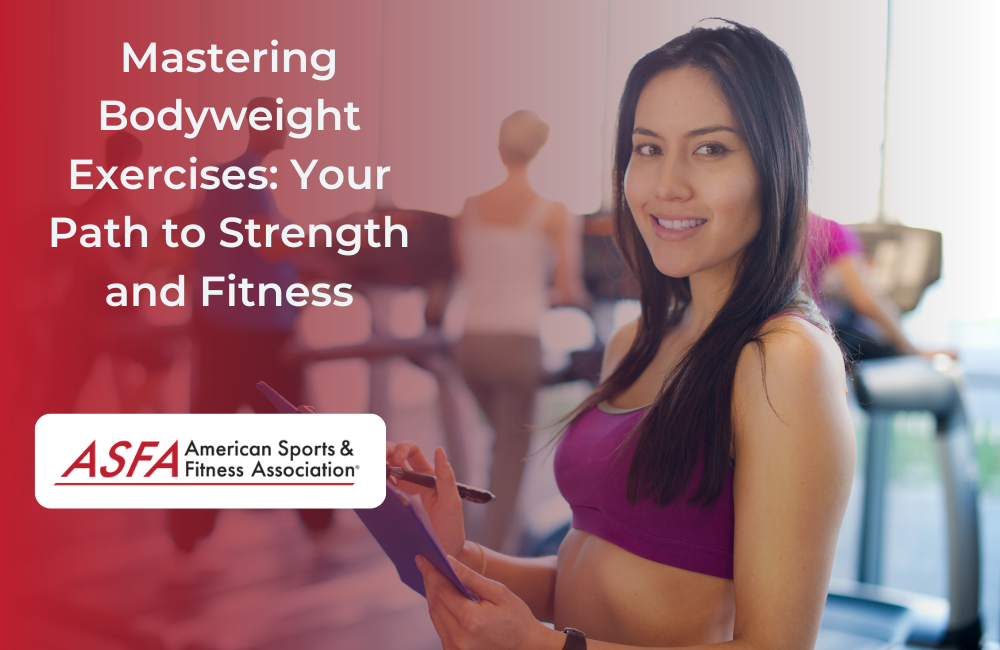Achieving strength and fitness doesn't always require expensive gym memberships or fancy equipment. Bodyweight exercises can be an effective way to build muscle, increase endurance, and improve overall fitness without the need for weights or machines. In this comprehensive guide, we will explore the world of bodyweight exercises, providing you with the knowledge and routines to master them and reach your fitness goals.
Why Bodyweight Exercises?
Bodyweight exercises offer numerous benefits that make them a fantastic addition to any fitness regimen:
- Convenience: You can perform bodyweight exercises almost anywhere, whether you're at home, in a park, or traveling.
- No Equipment Necessary: These exercises require no specialized equipment, making them accessible to everyone.
- Versatility: Bodyweight exercises can be adapted to your fitness level, from beginners to advanced athletes.
- Functional Strength: Many bodyweight exercises mimic natural movements, improving your functional strength and reducing the risk of injury in daily life.
Getting Started: The Basics
Before diving into bodyweight exercises, it's essential to understand the fundamentals:
- Proper Form: Maintain correct form to maximize effectiveness and prevent injuries. Video demonstrations or working with a fitness trainer can help ensure you're doing exercises correctly.
- Warm-Up: Always start with a warm-up to prepare your muscles and joints for exercise. Dynamic stretches like leg swings and arm circles are ideal.
- Progressive Overload: As you get stronger, increase the difficulty of your exercises. This can involve adding reps, sets, or trying more challenging variations.
Essential Bodyweight Exercises
- Push-Ups: A classic exercise that targets the chest, shoulders, and triceps. Variations like diamond push-ups and incline push-ups can increase or decrease the difficulty.
- Squats: Great for building leg strength and working the glutes and quadriceps. Air squats, goblet squats, and pistol squats are different variations.
- Planks: Excellent for core strength and stability. Side planks, forearm planks, and plank leg lifts are variations to try.
- Lunges: Improve leg strength and balance. Forward lunges, reverse lunges, and lateral lunges target different muscle groups.
- Pull-Ups/Chin-Ups: These exercises work the back and biceps. If you're a beginner, you can use resistance bands for assistance.
- Burpees: A full-body exercise that combines a squat, push-up, and jump. It's an excellent cardiovascular workout.
- Mountain Climbers: A dynamic exercise that engages the core and provides a cardiovascular challenge.
- Bodyweight Rows: These work the upper back and biceps. You can use a sturdy horizontal bar or a suspension trainer.
Sample Bodyweight Workout Routine
Here's a sample full-body bodyweight workout routine for beginners:
- Warm-up (5-10 minutes of dynamic stretching)
- Push-Ups: 3 sets of 10 reps
- Bodyweight Squats: 3 sets of 15 reps
- Planks: 3 sets of 30-45 seconds hold
- Lunges: 3 sets of 10 reps per leg
- Mountain Climbers: 3 sets of 20 reps per leg
- Cool-down and stretching (5-10 minutes)
Progression and Variation
As you become more comfortable with bodyweight exercises, you can increase the intensity by:
- Adding more repetitions or sets.
- Trying more challenging variations of each exercise.
- Reducing rest time between sets.
- Incorporating interval training for cardio.
Mastering bodyweight exercises is a fantastic way to build strength, improve fitness, and enhance your overall health. Whether you're a beginner or an advanced athlete, these exercises can be tailored to your fitness level and goals. By consistently incorporating bodyweight exercises into your fitness routine and progressively challenging yourself, you can achieve remarkable results and enjoy the convenience of working out anywhere, anytime.





